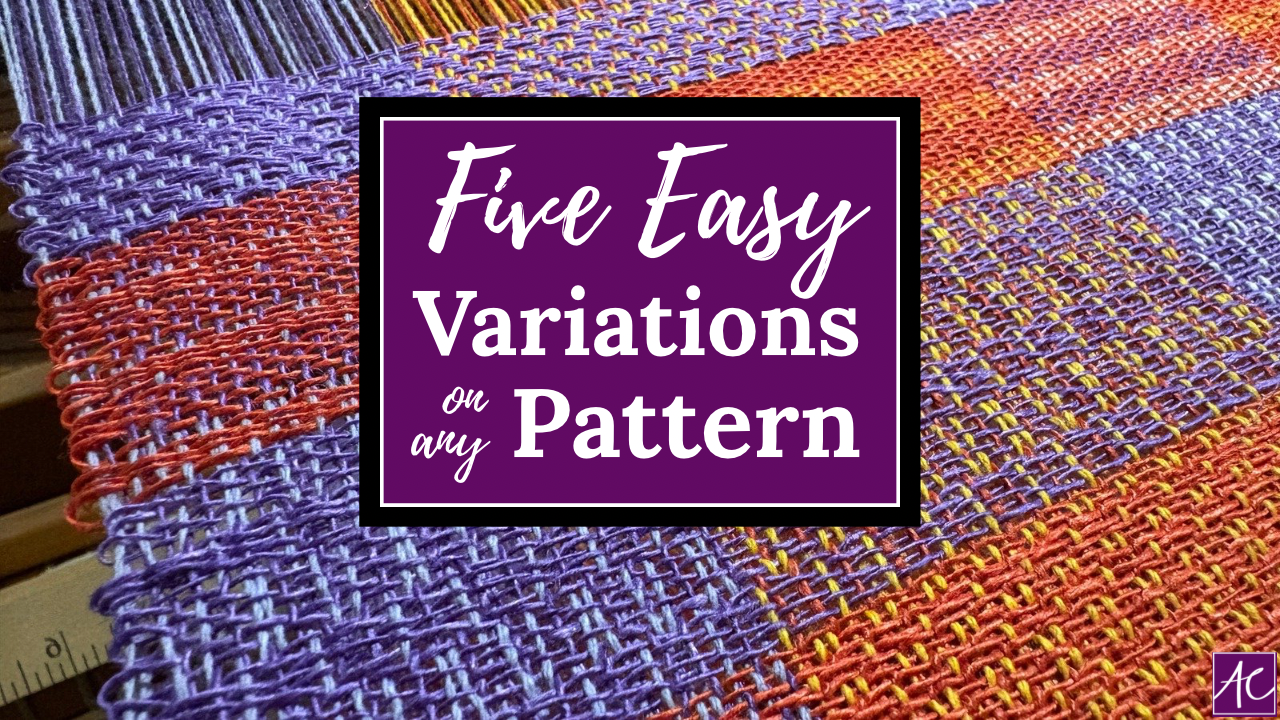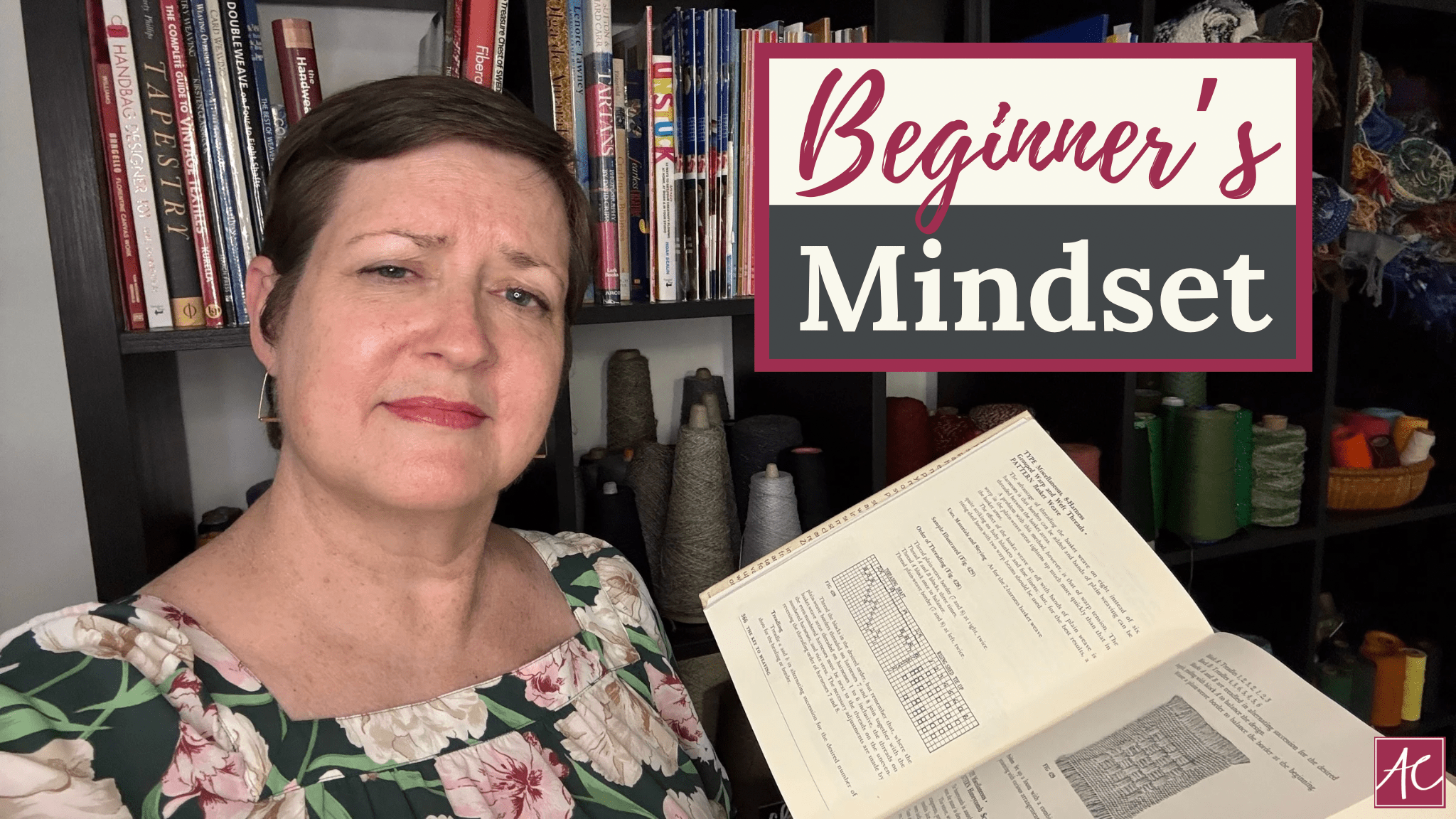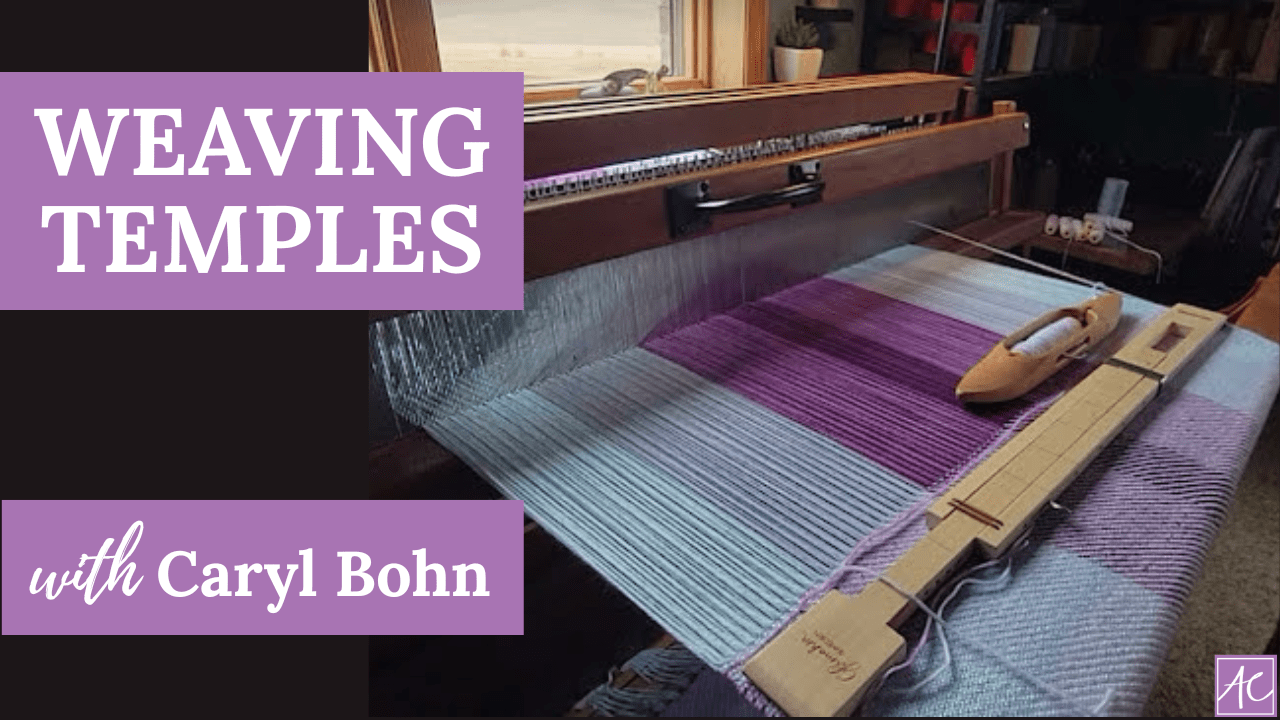Hello! It’s time to pair the reed with the loom – followed by threading many, many heddles! Here we go!
First up, the reed slides into the loom. The moving part at the front of the loom is called the beater bar. This is the heavy piece that the weaver pulls forward to make sure the yarns are evenly packed. The beater bar is where the reed goes – the knots facing the heddles.
I like to tie up the lease sticks that would otherwise be flopping around at the front of the loom. I learned this little trick from a fabulous DVD by Madelyn van der Hoogt called, “Warping Your Loom”! I highly recommend it! My friend, Madelyn, is brilliant! (We’re not actually BFF’s in real life. But, I feel like somehow we’ve connected through the tv… don’t judge…)
Time to thread some heddles! Heddles are tall, skinny pieces that live on each shaft in the loom and contain a eye in the middle where a yarn can go! Mine happen to be flat, metal heddles. But, they come in a whole variety of styles! So, to each his own!
(By the way, I promise you that the yarn is actually a colonial blue color, not the purplish color in the photo. Hopefully, some of the other images will be more accurate! Ah, technology…)
Heddles are very important. Why, you ask? What a good question! Heddles allow the weaver to select which shaft the yarn will be associated with, and therefore help determine the weaving pattern! And if you’ve never met a weaver, I’ll tell you that in most cases, pattern is King! So, heddles – good!!!
I like to do a slip knot either every inch, or every repeat – which isn’t always the same. As long as it makes sense in my head, it’s good. I’m sure in many cases, it is only logical to me. But, since I’m not being graded, who cares!
I like to keep a certain amount of heddles on the loom all the time. This means that with some projects, I have a lot left over. (An example, I need 100 heddles for the project and I keep 150 on each shaft.) For this project, I need to use every inch of width in the loom. So, if I’m not careful, I’ll end up with a parade of heddles all squashed at the edges effecting the direct path of my yarns. To solve that problem, I like to skip a heddle, then thread the next one. It won’t hurt anything to have empty heddles rattling around on the shafts and hopefully, that will distribute enough of them to keep the yarns traveling straight through the loom! Fingers crossed!
The heddles are threaded – woohoo! Next on the docket, I’ll tie all the lovelies to the back and begin winding on! So much excitement! Talk to you soon…













